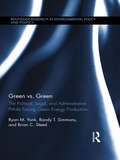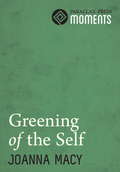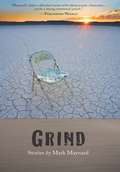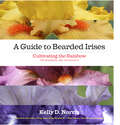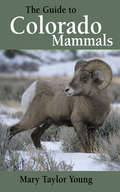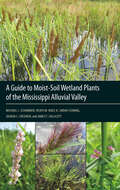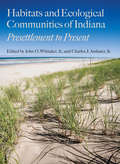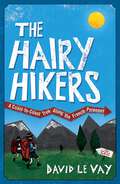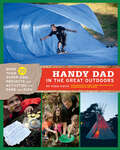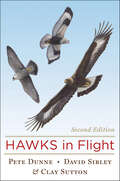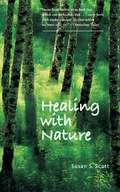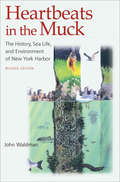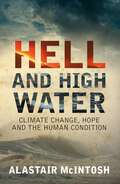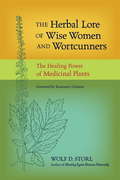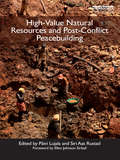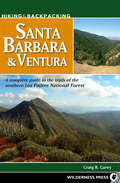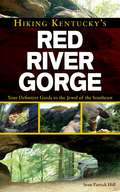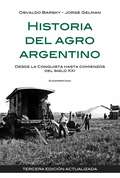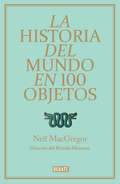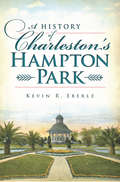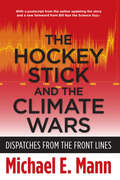- Table View
- List View
Green vs. Green: The Political, Legal, and Administrative Pitfalls Facing Green Energy Production (Routledge Research in Environmental Policy and Politics)
by Ryan M. Yonk Randy T. Simmons Brian C. SteedRenewable and carbon-neutral energy have been promoted as the future of energy production in the United States. Non-traditional energy sources show promise as alternatives to fossil fuels and may provide a sustainable source of energy in increasingly uncertain energy markets. However, these new sources of energy face their own set of political, administrative, and legal challenges. Green vs. Green explores how mixed land ownership and existing law and regulation present serious challenges to the development of alternative energy sources in the United States. Analytically examining and comparing five green energy sectors; wind, solar, geothermal, biofuel and hydro power, Ryan M. Yonk, Randy T. Simmons, and Brian C. Steed argue that discussing alternative energy without understanding these pitfalls creates unrealistic expectations regarding the ability to substitute "green" energy for traditional sources. The micro-goals of protecting individual areas, species, small-scale ecosystems, and other local environmental aims often limits ability to achieve macro-goals like preventing global climate change or transitioning to large-scale green energy production. Statutes and regulations designed to protect environmental and cultural integrity from degradation directly conflict with other stated environmental ends. Although there is substantial interest in adding clean energy to the grid, it appears that localized environmental interests interfere with broader environmental policy goals and the application of existing environmental laws and regulations may push us closer to gridlock. Green vs. Green provides a fascinating look into how existing environmental law created or will create substantial regulatory hurdles for future energy generations.
Greening of the Self
by Joanna MacyThe premise of Greening of the Self is that we are not individuals separate from the world. Instead we are always "co-arising" or co-creating the world, and we cannot escape the consequence of what we do to the environment. Joanna Macy's innovative writing beautifully demonstrates that by broadening our view of what constitutes "self" we can cut through our dualistic views and bring about the emergence of the "ecological self", that realizes that every object, feeling, emotion, and action is influenced by a huge, all-inclusive web of factors. Any change in the condition of any one thing in this web affects everything else by virtue of interconnectedness.Greening of the Self is visionary and future-oriented, making it essential reading for anyone who wants to discover the knowledge authority and courage to respond creatively to the crises of our time.Based on a chapter in Joanna Macy's bestselling World as Lover, World as Self.
Grind
by Mark MaynardConvicts round up wild mustangs, a schizophrenic homeless man wins the jackpot and disappears, a truck driver with a child's mind spends his last hours in the embrace of a prostitute's photos-disparate and vivid, Mark Maynard's characters intersect in the new wild west of Reno, Nevada."Throughout the volume's eight tenuously linked tales, lives and fortune are lost, and the city of Reno emerges as a locus of shattered souls. Maynard's debut collection bursts with idiosyncratic characters...packs a strong emotional punch...is strangely entertaining."-Publishers Weekly"In Grind, Maynard reveals a world the Nevada tourism board would rather you didn't see...A debut collection of stories that perfectly captures the seediness, desperation and sense of loss permeating the hot desert world of Reno."-Shelf Awareness"Mark Maynard's Reno is so sleazily appealing, so filled with convict cowboys, wild horses, racing pilots, truckers, snow bums, eco-terrorists, tattoo conventions, pawnshops and jackpots that you emerge from reading Grind dazed by this author's empathy for neglected quarters of humanity. You feel gritty all over-and more alive."-Carolyn Cooke, author of Daughters of the Revolution"The characters in these stories are as beautiful and broken as the desert itself. Mark Maynard explores the stony truths of lost lives with an unflinching eye for detail, an insider's sense of the place and its people, and an honest compassion. The heartbreaks here are real, as are the moments of uncommon grace and hard-won redemption."-Kim Barnes, author of In the Kingdom of Men"Mark Maynard's Grind is chock full of men and women who are desperate with want and full of spirit. Pawnbrokers. Truckers. Casino shills. Prison inmates. They're all here, and they're all gloriously alive. This is prime American fiction-tough, generous, and open-eyed."-Alyson Hagy, author of Boleto"Grind is exactly what I like in a locally based book. Plenty of those characters who make a visit to the environs of Reno both an exciting potential and an illicit affair...This is a Northern Nevada book."-D. Brian Burghart, Reno News & Review
A Guide to Bearded Irises: Cultivating the Rainbow for Beginners and Enthusiasts
by Kelly NorrisThe diversity of bearded irises rivals that of any other perennial grown in temperate climates. For some gardeners, they bring back warm memories of a grandparent's garden; for others, they're a cutting-edge plant with a seemingly endless capacity for producing new forms and patterns.As the manager of Rainbow Iris Farm and co-editor of the Bulletin of the American Iris Society, Kelly Norris is the authority on gardening with bearded irises. His introductory chapters offer tips for successful growth, garden design, plant selection, and "creating" new irises. A Guide to Bearded Irises also provides portraits of the most outstanding plants in each of the six recognized categories, from the dainty miniature dwarf bearded irises to the stately tall bearded irises. A resource section lists specialty nurseries, organizations devoted to bearded irises, and public gardens with notable iris collections.
The Guide to Colorado Mammals
by Mary Taylor YoungMary Taylor Young's latest field guide will help you discover and learn more about Colorado's native mammals. Covering 128 species, this guide explores mammals through detailed descriptions, full-color photographs, and informative sidebars. Also includes range maps, species' descriptions, a checklist, and a glossary. Outdoor enthusiasts and armchair naturalists will be delighted with this guide.Award-winning nature writer Mary Taylor Young's love of wild things led to a degree in zoology and a life devoted to nature and the environment. She has written nine books, including The Guide to Colorado Reptiles and Amphibians. Taylor Young lives in Castle Rock, Colorado.
A Guide to Moist-Soil Wetland Plants of the Mississippi Alluvial Valley
by Michael L. Schummer Heath M. Hagy K. Sarah Fleming Joshua C. Cheshier James T. CallicuttMoist-soil wetlands are seasonally flooded areas that produce early-succession plant communities of grasses, sedges, and other herbaceous plants. Moist-soil wetland plants provide food and cover for a diversity of wildlife species, including waterfowl and other waterbirds. Thus, conservation and management of moist-soil plants has become a major component of wildlife conservation efforts in the Mississippi Alluvial Valley and elsewhere in North America. The authors combined their extensive experience working in managed and unmanaged wetlands from southern Missouri to southern Louisiana to produce this beautifully illustrated identification guide. A detailed, yet user friendly field guide to identify moist-soil plants of the Mississippi Alluvial Valley has not been available until now. Management to encourage the growth of moist-soil plants is a common conservation strategy used by state, federal, and private landowners to increase food and cover for wildlife. Thus, landowners must be able to identify moist-soil plants to meet their wildlife conservation goals. Landowners, scientists, wildlife biologists, and students alike will welcome this useful resource which includes 600 detailed color photographs of plants, images of seeds and tubers, and other helpful information to aid in identification. The book includes subsections of major plant groups occurring in moist-soil wetlands including aquatics, grasses, broadleaves, sedges and rushes, trees and shrubs, vines, and agricultural crops.
Habitats and Ecological Communities of Indiana
by Jr. John O. Whitaker Jr. Charles J. Amlaner Jr. George R. Parker Peter E. Scott Marion T. JacksonIn Habitats and Ecological Communities of Indiana, leading experts assess the health and diversity of Indiana's eight wildlife habitats, providing detailed analysis, data-generated maps, color photographs, and complete lists of flora and fauna. This groundbreaking reference details the state's forests, grasslands, wetlands, aquatic systems, barren lands, and subterranean systems, and describes the nature and impact of two man-made habitats--agricultural and developed lands. The book considers extirpated and endangered species alongside invasives and exotics, and evaluates floral and faunal distribution at century intervals to chart ecological change.
The Hairy Hikers: A Coast-to-Coast Trek Along the French Pyrenees
by David Le VayFuelled by a mid-life crisis and the need to escape modern life, David and Rob set out to walk from the Atlantic to the Mediterranean. This humorous and often poignant account of their coast-to-coast trek along the French Pyrenees, reveals the history and geography along the way and will appeal to all walkers and admirers of human endeavour.
The Hairy Hikers: A Coast-to-Coast Trek Along the French Pyrenees
by David Le VayFuelled by a mid-life crisis and the need to escape modern life, David and Rob set out to walk from the Atlantic to the Mediterranean. This humorous and often poignant account of their coast-to-coast trek along the French Pyrenees, reveals the history and geography along the way and will appeal to all walkers and admirers of human endeavour.
The Handbook of Bird Photography
by Bence Mate Jari Peltomaki Markus VaresvuoThe Handbook of Bird Photography distills the knowledge, talent, and experience of three well-known professional wildlife photographers into one beautifully illustrated volume. Written in a manner that is easy to understand, this book offers fresh insight and practical tips that will broaden horizons for nature and bird photographers. The authors share their stories showcasing photographs for which they have received awards in major international wildlife photo competitions. In this book, you'll learn about all of the elements that lead to a great bird photograph, including:The bird photographer's equipment Shooting techniques: exposure, focus, how to show movement and freeze action, etc. In the field: bird behavior, hides, and how to attract birds How to use light and compose and crop images The best sites for finding and photographing birds You'll also learn how to show, share, promote, and sell your photographs. Bird photography is a brilliant way to spend your free time, and for some it's a career. This book helps beginners get the hang of things quickly and accurately, and offers field-specific expertise for more experienced photographers.
Handy Dad in the Great Outdoors: More Than 30 Super-Cool Projects and Activities for Dads and Kids
by Todd Davis Jared Cruce Nik SchulzSlacklining, edible bugs, tarp surfing, and more! In this awesome follow-up to the hugely popular Handy Dad, extreme sports athlete and TV host Todd Davis gathers more than 30 projects and activities sure to get kids outside and entertained for hours. With easy-to-follow instructions, helpful photographs, and detailed line illustrations, Handy Dad in the Great Outdoors is packed with all the essentials. From simple campsite know-how to more ambitious building projects (tepee anyone?), plus a few pranks for good measure, this book has something for every family and every place--be it the back country or the backyard.
Hate Mail
by MR BingoFrom the hilarious British illustrator Mr Bingo comes a collection of his most outrageous vintage postcards designed with iconic drawings and comically offensive messages.In April 2011, Mr Bingo launched a service on his website in which, for a small payment, he would send a customer a vintage postcard with one of his iconic drawings and comically offensive messages on the back. In an effort to create a good laugh in a world filled with junk mail and bills, Mr Bingo's service became a massive hit. So popular, in fact, that he had to shut down the service after just six days, due to the huge amount of requests.Hate Mail is a collection of Mr Bingo's 100 favorite postcards. Filled with fascinating vintage images from across the world and detailed hand-drawn illustrations, this darkly hilarious book will leave you charmed, offended, and giggling in equal measures.
Hawks In Flight
by Pete Dunne David Sibley Clay SuttonAmong the world's most popular birds, hawks can be some of the most difficult birds to identify. They're most often seen flying high above and at a distance. In the first edition of Hawks in Flight, Pete Dunne, David Sibley, and Clay Sutton presented a holistic method of hawk identification, using general body shape, the way they move, and the places they are most likely to be seen. The new edition of the book that Roger Tory Peterson called a "landmark" integrates an array of carefully selected photographs, David Sibley's superb illustrations, and a clear, information-packed text and takes raptor identification to a higher level. This edition covers all of the raptors that breed in North America, including those with limited ranges in Florida, the Southwest, and Texas. Picking up where its predecessor ended by including two decades of raptor identification refinement, Hawks in Flight summarizes and places in users&’ hands an identification skill set that used to take years to master. The unique alchemy of Dunne, Sibley, and Sutton—including their collective experience of more than one hundred years watching hawks—make this book a singular achievement and a must-have for anyone interested in hawks.
Healing with Nature
by Susan S. ScottSusan S. Scott is an experienced psychotherapist who, due to a back injury, was forced to abandon her therapist's couch and walk for therapy. Through her extended strolls through nature, she discovered the ingenious ability of trees to grow around obstacles and, in essence, heal themselves. The result of Dr. Scott's musings is Healing with Nature. This collection of stories and photos describes a different aspect of the healing process, matched with a corresponding tree image. Readers will learn how to observe their natural environment with fresh eyes, tap into their own self-healing powers, and discover creative ways to become the master of their own lives. An inspiring read for anyone with an interest in spiritual growth!
Heartbeats in the Muck: The History, Sea Life, and Environment of New York Harbor, Revised Edition
by John WaldmanHeartbeats in the Muck traces the incredible arc of New York Harbor’s environmental history. Once a pristine estuary bristling with oysters and striped bass and visited by sharks, porpoises, and seals, the harbor has been marked by centuries of rampant industrialization and degradation of its natural environment. Garbage dumping, oil spills, sewage sludge, pesticides, heavy metals, poisonous PCBs, landfills, and dredging greatly diminished life in the harbor, in some places to nil. Now, forty years after the Clean Water Act began to resurrect New York Harbor, John Waldman delivers a new edition of his New York Society Library Award–winning book. Heartbeats in the Muck is a lively, accessible narrative of the animals, water quality, and habitats of the harbor. It includes captivating personal accounts of the author’s explorations of its farthest and most noteworthy reaches, treating readers to an intimate environmental tour of a shad camp near the George Washington Bridge, the Arthur Kill (home of the resurgent heron colonies), the Hackensack Meadowlands, the darkness under a giant Manhattan pier, and the famously polluted Gowanus Canal. A new epilogue details some of the remarkable changes that have come upon New York Harbor in recent years. Waldman’s prognosis is a good one: Ultimately, environmental awareness and action has allowed the harbor to begin cleaning itself. Although it will never regain its native biological glory, the return of oysters, herons, and a host of other creatures is an indication of New York Harbor’s rebirth. This excellent, engaging introduction to the ecological issues surrounding New York Harbor will appeal to students and general readers alike. Heartbeats in the Muck is a must-read for anyone who likes probing the wilds, whether country or city, and natural history books such as Beautiful Swimmers and Mannahatta.
Hell and High Water: Climate Change, Hope and the Human Condition
by Alistair McIntoshThe ecologist and author of Soil & Soul makes a compelling and provocative argument for a new way of life in the face of climate change. Climate change is the greatest challenge that the world has ever faced. In this groundbreaking book, Alastair McIntosh summarizes the science of what is happening to the planet using his home country of Scotland as a case study. He then argues that the root of our climate crisis is not in our politics but in our consumerism—an addictive mentality where wants have replaced needs and consumption drives our very identity. In a fascinating journey through literature that speaks to climate change—including the ancient Sumerian Epic of Gilgamesh, Plato's myth of Atlantis, and Shakespeare's Macbeth—McIntosh reveals the psychohistory of modern consumerism. He shows how we have fallen prey to a numbing culture of violence and the manipulation of marketing. Only when we resist these vices and face reality will we discover the spiritual meaning of our troubled times. Only then can magic, new meaning, and all that gives life, start to mend a broken world. &“What [McIntosh] does brilliantly here is offer an alternative, deeply humanist version of green politics.&” —The Scotsman, UK
Hello Kitty, Hello Spring!
by SanrioHello Kitty, hello seasonal fun! This board book depicts our favorite star and her cast of friends enjoying all that spring has to offer: butterflies, baseball, and more!
The Herbal Lore of Wise Women and Wortcunners
by Wolf D. Storl Rosemary GladstarTraditional herbalists or wise women were not only good botanists or pharmacologists; they were also shamanic practitioners and keepers of occult knowledge about the powerful properties of plants. Traveling back to the healing arts of the ancient Egyptians, Greeks, and Romans, The Herbal Lore of Wise Women and Wortcunners takes readers deep into this world, through the leechcraft of heathen society and witches' herb bundles to the cloister gardens of the Middle Ages. It also examines herbal medicine today in the traditional Chinese apothecary, the Indian ayurvedic system, homeopathy, and Native American medicine. Balancing the mystical with the practical, author Wolf Storl explains how to become an herbalist, from collecting material to distilling and administering medicines. He includes authoritative advice on herb gardening, as well as a holistic inventory of plants used for purposes both benign and malign, from herbs for cooking, healing, beauty, and body care to psychedelic plants, witches' salves for opening alternative realities, and poisonous herbs that can induce madness or cause death. Storl also describes traditional "women's plants" and their uses: dyeing cloth, spinning and weaving, or whipping up love potions. The Herbal Lore of Wise Women and Wortcunners is written for professional and amateur herbalists as well as gardeners, urban homesteaders, and plantspeople interested in these rich ancient traditions.
High-Value Natural Resources and Post-Conflict Peacebuilding (Post-Conflict Peacebuilding and Natural Resource Management)
by Päivi Lujala Siri Aas RustadFor most post-conflict countries, the transition to peace is daunting. In countries with high-value natural resources – including oil, gas, diamonds, other minerals, and timber –the stakes are unusually high and peacebuilding is especially challenging. Resource-rich post-conflict countries face both unique problems and opportunities. They enter peacebuilding with an advantage that distinguishes them from other war-torn societies: access to natural resources that can yield substantial revenues for alleviating poverty, compensating victims, creating jobs, and rebuilding the country and the economy. Evidence shows, however, that this opportunity is often wasted. Resource-rich countries do not have a better record in sustaining peace. In fact, resource-related conflicts are more likely to relapse. Focusing on the relationship between high-value natural resources and peacebuilding in post-conflict settings, this book identifies opportunities and strategies for converting resource revenues to a peaceful future. Its thirty chapters draw on the experiences of forty-one researchers and practitioners – as well as the broader literature – and cover a range of key issues, including resource extraction, revenue sharing and allocation, and institution building. The book provides a concise theoretical and practical framework that policy makers, researchers, practitioners, and students can use to understand and address the complex interplay between the management of high-value resources and peace. High-Value Natural Resources and Post-Conflict Peacebuilding is part of a global initiative led by the Environmental Law Institute (ELI), the United Nations Environment Programme (UNEP), the University of Tokyo, and McGill University to identify and analyze lessons in natural resource management and post-conflict peacebuilding. The project has generated six edited books of case studies and analyses, with contributions from practitioners, policy makers, and researchers. Other books in the series address land; water; livelihoods; assessing and restoring natural resources; and governance.
Hiking and Backpacking Santa Barbara and Ventura
by Craig R. CareyNamed for the Spanish padres who established a network of missions along California's southern and central coasts, the Los Padres National Forest is the second-largest National Forest in the state, encompassing approximately 1,950,000 acres - nearly half of which is federally-designated wilderness.Hiking and Backpacking Santa Barbara and Ventura fills a huge gap in coverage of this great hiking and backpacking destination, leading the reader through the varied terrain of the forest's southern districts, from the fern-clad grottoes of the Santa Barbara frontcountry to the sweeping vistas and granite-clad ridges of the Chumash Wilderness.No other guide covers the region in such detail, and not since Dennis Gagnon's near-legendary guides in the 70s and 80s has the Santa Barbara (and Ventura) backcountry been given the guidebook treatment ... but this book goes even further. Every official trail (and many use trails) in the Santa Barbara, Ojai, and Mt. Piños districts are covered here, including those in the southern San Rafael Wilderness, Dick Smith Wilderness, Matilija Wilderness, Sespe Wilderness, Chumash Wilderness, the Santa Ynez Recreation Area, Rose Valley, the Santa Barbara and Montecito frontcountry, the Ojai frontcountry, and the Santa Paula/Fillmore frontcountry.
Hiking Kentucky's Red River Gorge
by Sean Patrick HillHiking Kentucky's Red River Gorge is the definitive guide to trails in the Red River Gorge Geologic Area, Natural Bridge State Park, and Clifty Wilderness. The book showcases 25 of the best hikes in the Gorge, as well as a back-of-book bonus on nearby trails. Distinguished from other Red River Gorge guides, this book provides readers not only with detailed maps, sharp photos, and individual-trail details, THIS guidebook outlines definitive hikes-ways to explore the area and enjoy its flora, fauna, and history.The easy-to-use layout treats each hike distinctly, as its own adventure. Because of this, the routes are detailed with photographs, maps, trail gradient information and, most importantly, ratings for key elements that make a trail appealing to a wide variety of people. This allows the reader to make informed decisions about which trails they will want to hike, which ones will be appropriate for children, and so on. Further, readers will discover how to combine trails and routes for a great hiking day or backpacking trip. This book is ideal for people who've never been to the Gorge, or even beginner hikers.The book simply looks great and is easy to read, and designed for planning hikes as well as while on the trail.
HISTORIA DEL AGRO ARGENTINO (EBOOK)
by O. Gelman BarskyA pesar de la importancia que tiene el agro en la sociedad argentina, han sido escasos los intentos de indagar en su evolución a lo largo de la historia. Este libro construye una síntesis del desarrollo rural de todo el país: comienza con el análisis de las comunidades indígenas y continúa con la construcción del mundo agrícola colonial, la conformación de las nuevas economías agrarias a partir de la independencia, la expansión ganadera en la primera mitad del siglo XIX y el crecimiento de distintas economías regionales. El estudio avanza sobre el notable desarrollo del agro pampeano y el auge de la producción azucarera del noroeste y vitivinícola de Cuyo, así como las de otras sociedades del interior. Asimismo, son analizados los efectos de la Primera Guerra Mundial y de la crisis internacional de los años 30 en las políticas y las dinámicas agrarias. La caída de la producción agrícola pampeana y los cambios sociales desatados en esta región en el contexto de la Segunda Guerra Mundial, y el posterior período de recuperación, junto a los avances de las producciones regionales se presentan detalladamente. Finalmente, el impacto de las medidas macroeconómicas en la reorganización del ámbito rural en las últimas décadas, incluido el conflicto por el excedente agrario que sacudió al país en 2008, cierra este libro en el que los autores ofrecen una visión completa y profunda de un sector decisivo en el pasado y presente de la Argentina.
La historia del mundo en 100 objetos
by Neil MacgregorEste libro ofrece un enfoque único de la historia de la humanidad a través del estudio de objetos que las distintas civilizaciones, a menudo sin pretenderlo, han ido dejando a su paso. Estas obras se convierten en una suerte de prismas a través de los cuales podemos explorar mundos antiguos y conocer algo más sobre las vidas de los hombres y mujeres que los habitaron. El campo de estudio que abarca es enorme, comienza con el primer objeto fabricado por manos humanas que se conserva, una herramienta para cortar procedente de la Garganta de Olduvai, en África, y termina con un objeto del siglo XXI que representa el mundo en el que vivimos hoy en día.El propósito de Neil Mac Gregor no es ofrecer una mera descripción de estos valiosísimos objetos sino mostrarnos su significado: cómo una columna de piedra nos habla sobre un gran emperador indio que predicaba tolerancia a su pueblo, cómo monedas españolas de ocho, acuñadas en Potosí, nos explican los orígenes de una moneda global, o cómo un juego de té de la época victoriana nos revela cuál fue la importancia del imperio.Cada capítulo sumerge al lector en una civilización pasada y lo acompaña con una guía de excepción. Vista de este modo, la historia es un caleidoscopio, cambiante, interrelacionado, sorprendente, que configura nuestro mundo contemporáneo de un modo que la mayoría de nosotros nunca habríamos imaginado. Un festín para el intelecto y para la vista, uno de los libros de historia más originales y fascinantes que se han publicado en años.
A History of Charleston's Hampton Park
by Kevin R. EberleMost visitors to Charleston never venture far enough north to discover what residents claim as the most appealing public open space on the peninsula. Hampton Park is completely unexpected in this city famous for highly manicured gardens with clipped lawns, sculpted shrubs and precise designs hidden behind massive walls and iron gates. Hampton Park's naturalistic character was created as an antidote to the cramped conditions of the lower peninsula, and it still offers open fields of grass, walking trails, shade trees and overflowing flower beds. But the story is not that simple--it began more than three hundred years ago with Native Americans and involves early plantation life, Revolutionary War battles, horse racing, the Civil War, industrial development, civic spectacle, professional baseball, a zoo and disco.
The Hockey Stick and the Climate Wars: Dispatches from the Front Lines
by Michael MannThe ongoing assault on climate science in the United States has never been more aggressive, more blatant, or more widely publicized than in the case of the Hockey Stick graph—a clear and compelling visual presentation of scientific data, put together by MichaelE. Mann and his colleagues, demonstrating that global temperatures have risen in conjunction with the increase in industrialization and the use of fossil fuels. Here was an easy-to-understand graph that, in a glance, posed a threat to major corporate energy interests and those who do their political bidding. The stakes were simply too high to ignore the Hockey Stick—and so began a relentless attack on a body of science and on the investigators whose work formed its scientific basis.The Hockey Stick achieved prominence in a 2001 UN report on climate change and quickly became a central icon in the "climate wars." The real issue has never been the graph's data but rather its implied threat to those who oppose governmental regulation and other restraints to protect the environment and planet. Mann, lead author of the original paper in which the Hockey Stick first appeared, shares the story of the science and politics behind this controversy. He reveals key figures in the oil and energy industries and the media frontgroups who do their bidding in sometimes slick, sometimes bare-knuckled ways. Mann concludes with the real story of the 2009 "Climategate" scandal, in which climate scientists' emails were hacked. This is essential reading for all who care about our planet's health and our own well-being.
